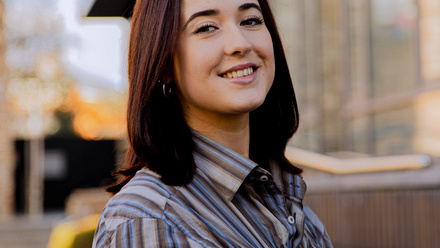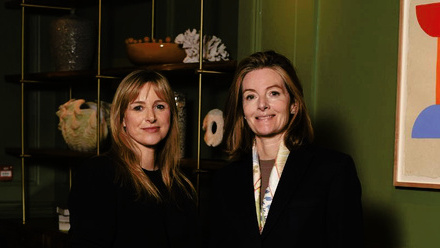Algorithms, Attention and Entertainment
The speakers included Claire Hyland, Head of The Youth Lab, Insights & Strategy at THINKHOUSE and Beth Marchant, Senior Strategy Manager, Global Partnerships at System1. Additionally, the speakers were joined by two speaker panels. The youth panel included Ciarán Fogarty, Blessing Dosunmu, Steven McCabe and Aliyah Olawepo. The Creator Panel, hosted by Jane McDaid (Founder & Head of Creative Innovation at THINKHOUSE), featured Jim Flanagan, Rob Malone, David Coffey and Lucy Carroll. Below are the top takeaways from the event:
Algorithmically Driven Newsfeeds
Search engines and social media are serving audiences with hyper-personalised content that is shortening discovery cycles while providing platforms and brands with real-time feedback showing which content elicits the greatest response. Younger audiences are seeking to resist the algorithmically adjusted newsfeed and questioning sources of influence; the spread of generative artificial intelligence GenAI) Content has amplified this.
The New Architecture of Influence Online
Online influence can be seen in 3 layers: the broadcast layer (top down from brand or organisation to audience), the network layer (messages spread among the audience at speed and enabled by technology) and the machine layer (data being ingested by search engines, social networks and AI tools which present a personalised newsfeed or generate a new output). More and more younger audiences are turning to ChatGPT and Perplexity as an alternative to Google search; this may be compounded by recent improvements to Perplexity and the release of its Comet browser. The advice for brands:
-
Build a brand that machines can understand, not just recognise.
-
Optimise for answer-based discovery.
Short-Form Video Is a Hit
Short-form video has reshaped how people consume content and, with it, presents a powerful opportunity for marketers. To understand what drives creative effectiveness in this new landscape, System1 and TikTok have conducted two large-scale studies, analysing 887 TikTok ads across creative styles. Three main styles have emerged:
-
Creator-led: Ads made by a creator for a brand.
-
Brand Native: Ads made by brands built natively for the platform.
-
Brand Traditional: Ads developed by brands for traditional channels (e.g. TV), repurposed for the platform.
Brand size shapes what creative needs to do. Category leaders can (but shouldn’t) rely on superior equity to carry less distinctive or less entertaining creative, while challenger and contender brands can’t afford to.
The Return on Entertainment (ROE)
Advertisers no longer must choose between entertaining their audiences or selling to them; the most entertaining short-form ads build brand, and they convert. Salesmanship sells, but often at the expense of brand. Entertainment, by contrast, delivers on both fronts. With the right mix of distinctive assets, especially when woven into the creative narrative, brands can hook attention and earn early brand recognition. In creator-led formats, this turns high attention into high impact, offering all brands, and especially challenger and contender brands, a powerful path to outperform.
Closing
In today’s media ecosystem, discovery, influence, and attention are being reshaped by algorithms, AI, and entertainment. The shift from search to answer-based discovery, and from static ads to creator-led short-form video, signals a new era of adaptive communication. Brands that understand both people and machines, optimise for visibility within algorithmic systems, and prioritise entertaining storytelling will define the next generation of influence—measured not just in clicks, but in cultural and commercial impact.
Authored by Rob Farrell, PRII Head of Training & Development.






![fp [300]-PRIIGraduation2025-231.jpg](https://www.prii.ie/static/3c4481ef-2c9f-42ec-adbc5f2530e38141/resourcegridlistingimagedefault_4d12532919c64e60a22baf03232bbf94_4a7c7e45a350/fp-300-PRIIGraduation2025-231.jpg)